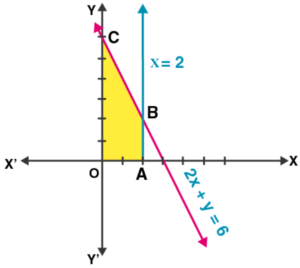According to the question:
![]()
and the constraints
![]()

Let us consider
![]()
![]()
Now, plotting all the constrain equations we see that the shaded area OABC is the feasible region determined by the constraints.
The feasible region is bounded. So, the maximum value will occur at a corner point of the feasible region.
Corner points are
![]()
On evaluating the value of Z, we get

From the above table it’s seen that the maximum value of Z is
![]()
.
Therefore, the maximum value of Z is
![]()
at
![]()
.
